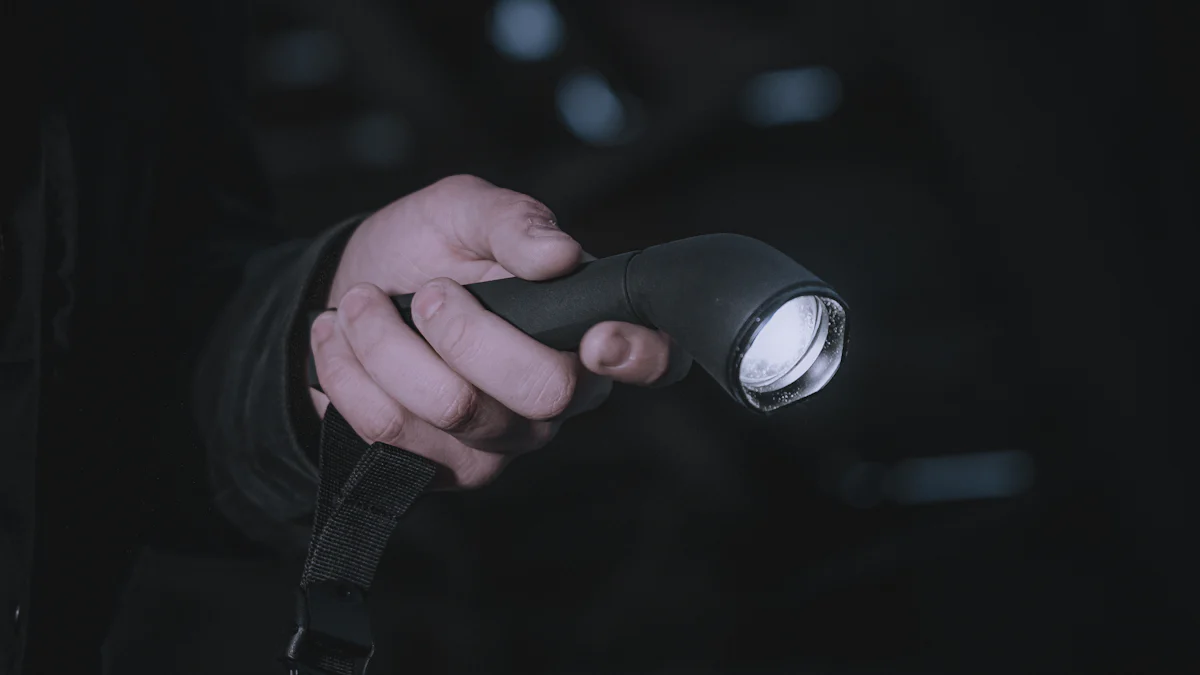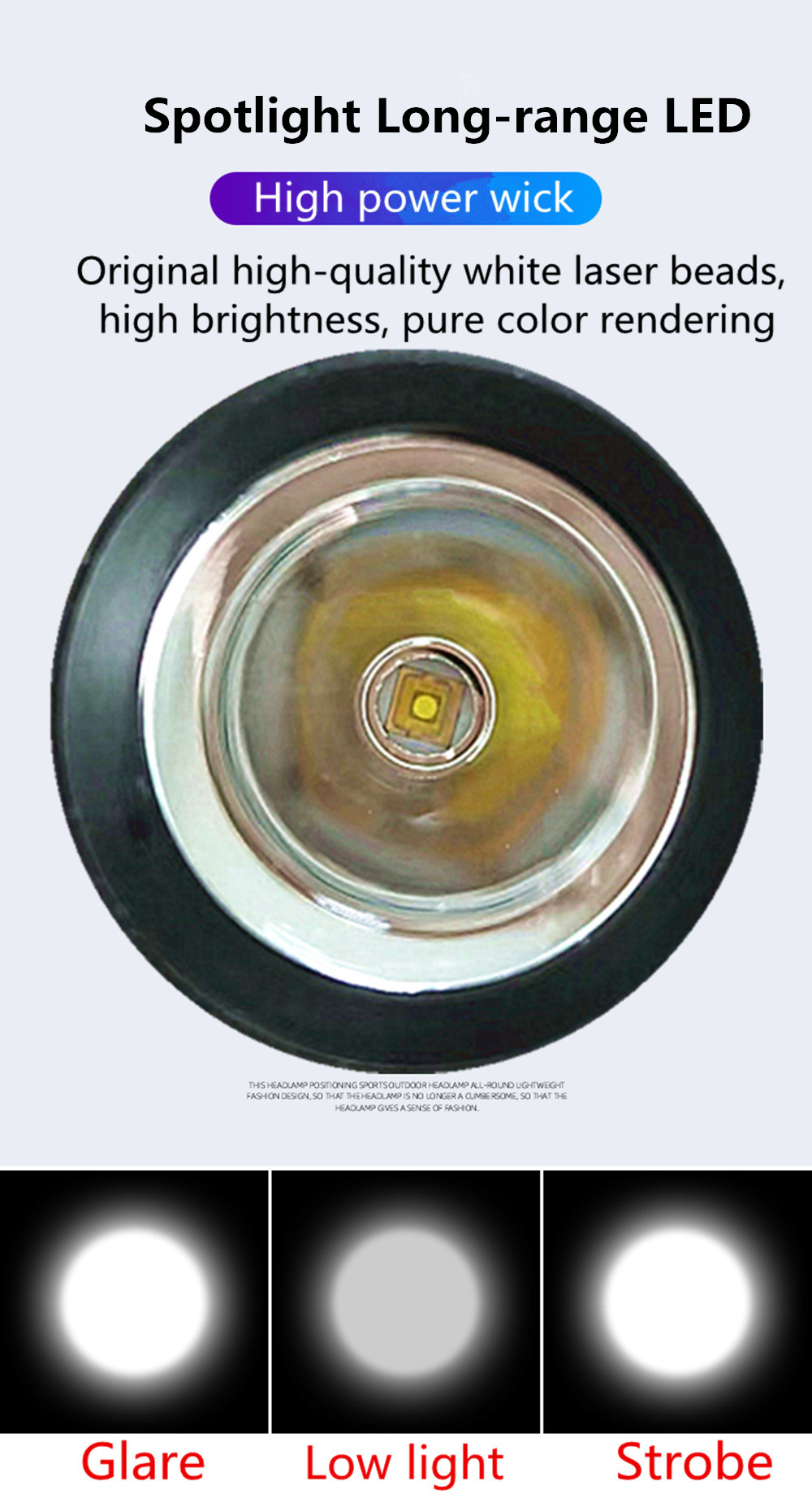Understanding the Different Modes of Flashlights: High, Medium, Low, Strobe

Flashlights are essential tools for various situations. Their different modes of flashlights, such as spotlight or floodlight, adapt to your needs. Use a spotlight to navigate trails or signal for help. A floodlight works best for camping or emergencies requiring wide visibility. Understanding these modes ensures you maximize your flashlight's potential.
Key Takeaways
High Mode gives the brightest light for outdoor trips or emergencies. Use it less often to save battery power.
Medium Mode offers good brightness and saves battery, great for daily tasks like night walks or reading.
Low Mode saves battery and gives enough light for nearby tasks. It’s great for emergencies when you need the flashlight to last.
Overview of the Different Modes of Flashlights

High Mode
High Mode delivers maximum brightness, making it ideal for situations where you need intense light. You can use this mode to illuminate large areas, such as during outdoor adventures or search-and-rescue operations. It also works well for signaling over long distances. However, this mode consumes more battery power, so it’s best to use it sparingly when conserving energy is a priority.
Medium Mode
Medium Mode strikes a balance between brightness and battery efficiency. This mode provides enough light for most tasks, such as walking at night or working in dimly lit spaces. It’s a practical choice for everyday use, offering sufficient illumination without draining the battery too quickly. You’ll find this mode especially useful when you need consistent lighting for extended periods.
Low Mode
Low Mode is perfect for conserving battery life while still providing adequate light for close-range tasks. You can use it for reading maps, navigating indoors, or preserving your night vision.
Adjustable brightness levels in flashlight modes help you conserve battery life and extend usage.
This mode is particularly helpful during emergencies when you need to make your flashlight last as long as possible.
Strobe Mode
Strobe Mode offers a flashing light that serves multiple purposes.
Security and Self-Defense: It disorients threats, making it a valuable tool for police and security personnel.
Improving Visibility: Emergency responders and roadside workers use it to enhance their visibility to drivers.
Finding Lost Pets: The flashing light helps you locate pets at night.
This mode is essential for emergencies and self-defense, making it a versatile feature in flashlights with multiple lighting modes.
Purpose and Applications of Flashlight Modes

High Mode for Maximum Brightness
High Mode provides the brightest light output, making it essential for tasks requiring maximum visibility. You can use this mode to light up large areas during outdoor activities like hiking or camping. It’s also helpful for search-and-rescue missions where every second counts. High Mode works well for signaling over long distances, ensuring you can attract attention when needed. However, this mode drains the battery quickly. Use it only when you need intense brightness for a short period.
Medium Mode for Balanced Use
Medium Mode offers a practical balance between brightness and battery efficiency. This mode is ideal for everyday tasks, such as walking your dog at night or fixing something in a dimly lit room. It provides enough light output to see clearly without depleting the battery too fast. Medium Mode is also suitable for extended use, making it a reliable choice for activities like reading or working in low-light conditions. You’ll find it versatile and energy-efficient for most situations.
Low Mode for Battery Conservation
Low Mode is perfect when you need to conserve battery life. It provides just enough light for close-range tasks, such as reading a map or navigating indoors. This mode also helps preserve your night vision, which is crucial during nighttime activities. In emergencies, Low Mode ensures your flashlight lasts longer, giving you more time to find help or stay safe. It’s a valuable feature for anyone who relies on flashlights during extended outings or power outages.
Strobe Mode for Emergencies and Self-Defense
Strobe Mode is a powerful tool for emergencies and self-defense. The rapid flashing light can disorient potential threats, giving you time to react or escape. It’s also effective for signaling in critical situations, such as roadside breakdowns or natural disasters. Emergency responders often use strobing flashlights to enhance visibility and draw attention.
There are some legitimate tactical advantages for a law enforcement officer to use a strobe. It requires a little training and is very limited in its usefulness. I don't see any advantage for a civilian except for signaling or drawing attention.
For civilians, a strobing flashlight is most useful for making yourself visible or alerting others to your location. Whether you’re hiking, biking, or in an emergency, this mode ensures you stand out when it matters most.
Choosing the Right Flashlight Mode
Evaluating Your Lighting Requirements
Choosing the right flashlight mode starts with understanding your specific needs. Ask yourself what you aim to achieve. For example, if you need to light up a large area, the high mode provides maximum brightness. For everyday tasks like walking at night, medium mode offers a balanced option. Low mode works best for close-range activities, such as reading or navigating indoors. In emergencies, a strobe light can signal for help or disorient potential threats. By identifying your purpose, you can select the most effective mode for the situation.
Considering Battery Life and Efficiency
Battery life plays a crucial role in flashlight mode selection. Each mode consumes power differently. High-intensity modes drain the battery faster, while lower settings conserve energy. Adjustable brightness settings allow you to extend battery life by using only the light you need. For example:
High mode is ideal for short bursts of intense light.
Medium mode balances brightness and efficiency for longer use.
Low mode ensures the flashlight lasts during extended periods.
When you plan to use a tactical strobe light or any other mode, consider how long you need the flashlight to function. Strategic use of modes helps you manage power effectively.
Adapting to Environmental Conditions
Environmental factors also influence your choice of flashlight mode. In foggy or smoky conditions, a strobe light enhances visibility by cutting through the haze. During nighttime activities, low mode preserves your night vision while providing enough light to see. If you’re in a high-risk area, a strobe light can act as a deterrent or signal for help. Always adapt your mode to match the environment for optimal performance.
Flashlights with multiple modes offer unmatched versatility for outdoor activities and emergencies. You can conserve energy, adapt to diverse situations, and enhance safety by selecting the right mode. Features like strobe and SOS modes improve visibility and signaling during critical moments. Understanding these modes ensures you use your flashlight efficiently in any scenario.
FAQ
What is the purpose of a tactical flashlight?
A tactical flashlight provides high durability and brightness. It’s designed for self-defense, emergencies, and outdoor activities, offering versatile lighting modes for various situations.
How do you use the strobe mode effectively?
Activate the strobe mode to disorient threats or signal for help. This feature in tactical flashlights enhances safety during emergencies or high-risk scenarios.
Can a tactical flashlight replace a regular flashlight?
Yes, a tactical flashlight can replace a regular one. It offers additional features like strobe mode, durability, and high brightness, making it more versatile for everyday use.
See Also
Explore Various Categories of Flashlights Available Today
Grasping the Idea of Continuous Dimming in Flashlights
Defining What a Tactical Flashlight Truly Is
Comparing Police Flashlights and Standard Flashlights: A Guide
